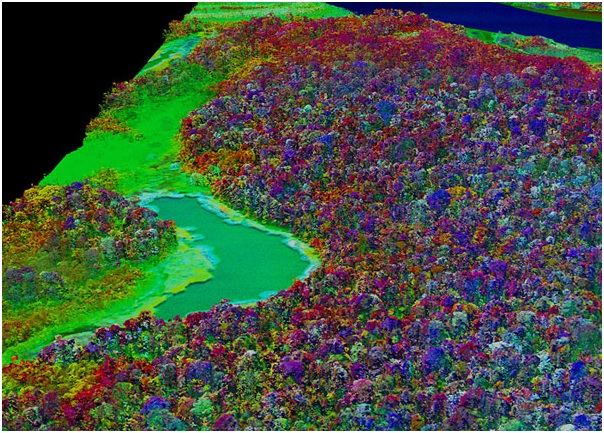High Tech Ecology from the Air
Anonym
The other day I discovered a great TED talk by Greg Asner called "Ecology from the Air." Greg is an old grad-school colleague of mine, and is now at Stanford University and Carnegie Institution. Here at Exelis Greg is known as the brains behind ENVI's Vegetation Analysis tools. In his TED talk, Greg discusses ecological questions that can be addressed with his Carnegie Airborne Observatory (CAO), which includes a high-resolution imaging spectrometer integrated with a high resolution LiDAR sensor, mounted aboard an aircraft with custom avionics.
The key innovation of the CAO is the integration of the state-of-the-art hyperspectral and LiDAR instruments. This integration does more than allow for fascinating data visualizations, although it also does that. The imaging spectrometer provides information about the chemistry of a vegetation canopy at the same time that the LiDAR instrument provides a detailed 3D representation of the canopy structure. This marriage of chemistry data and structure data in a geographic context has the power to completely change our understanding of ecosystems.
 The Peruvian Amazon as seen by the Carnegie Airborne Observatory (CAO). Image courtesy of Carnegie Airborne Observatory (as published in New Scientist)
The Peruvian Amazon as seen by the Carnegie Airborne Observatory (CAO). Image courtesy of Carnegie Airborne Observatory (as published in New Scientist)
Greg goes on to note how important tropical forests are in terms of global ecology, and yet how little we really know about them, and asks, "How can we save what we don't understand?" He outlines three important questions about tropical forests that the CAO is well suited to address, and which are hard to answer from the ground or with conventional satellite imagery alone:
- How do we manage our carbon reserves in tropical forests? By which he seems to mean, "How do we keep the carbon in the forests,instead of releasing it to the atmosphere as greenhouse gases?"
- How do we prepare for climate change in a complicated,vast and largely remote place like the Amazon rainforest?
- How do we manage biodiversity in a planet of protected ecosystems? In other words, when much of the earth's biodiversity is preserved in heavily managed parks and preserves, how do we get the information that is critical for making decisions that preserve biodiversity?
What do you think of Greg's talk? Have you been inspired by imagery science you've seen in other TED talks? Leave a comment to let us know.